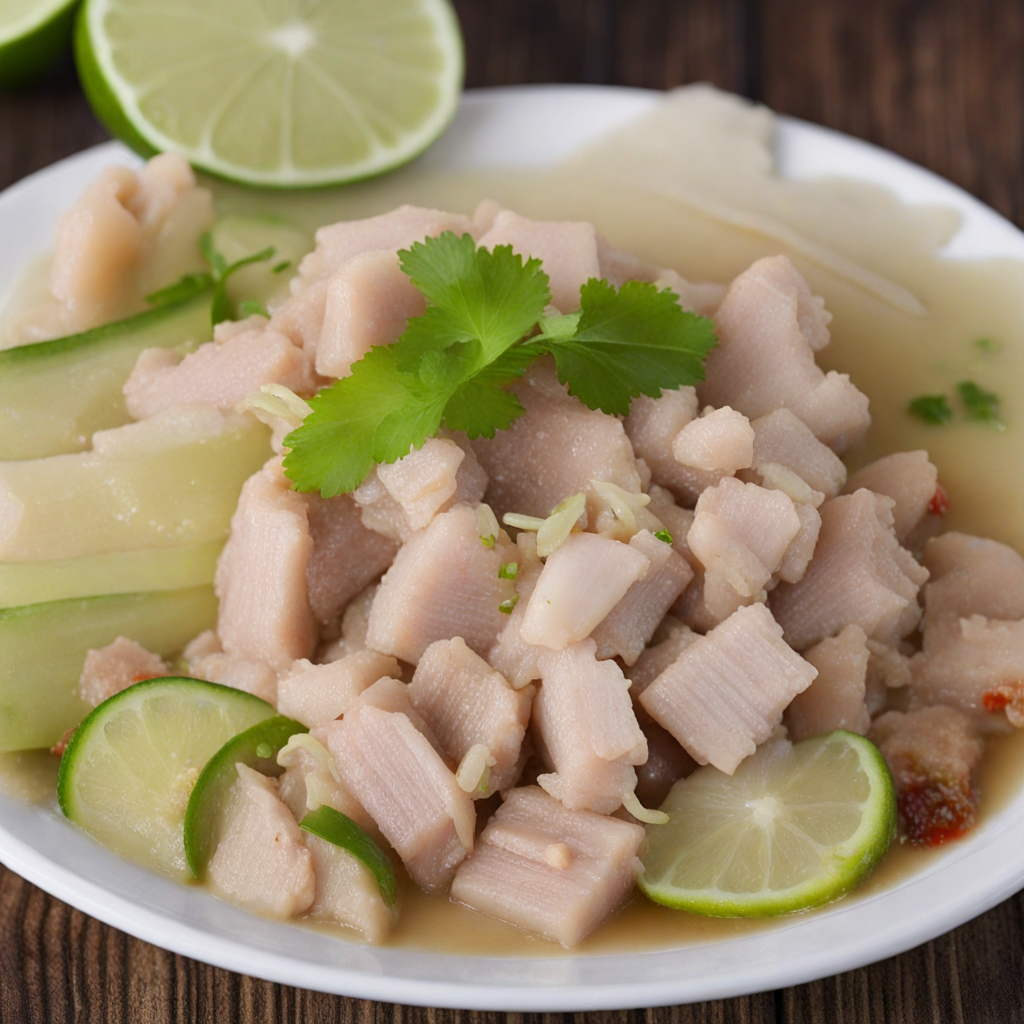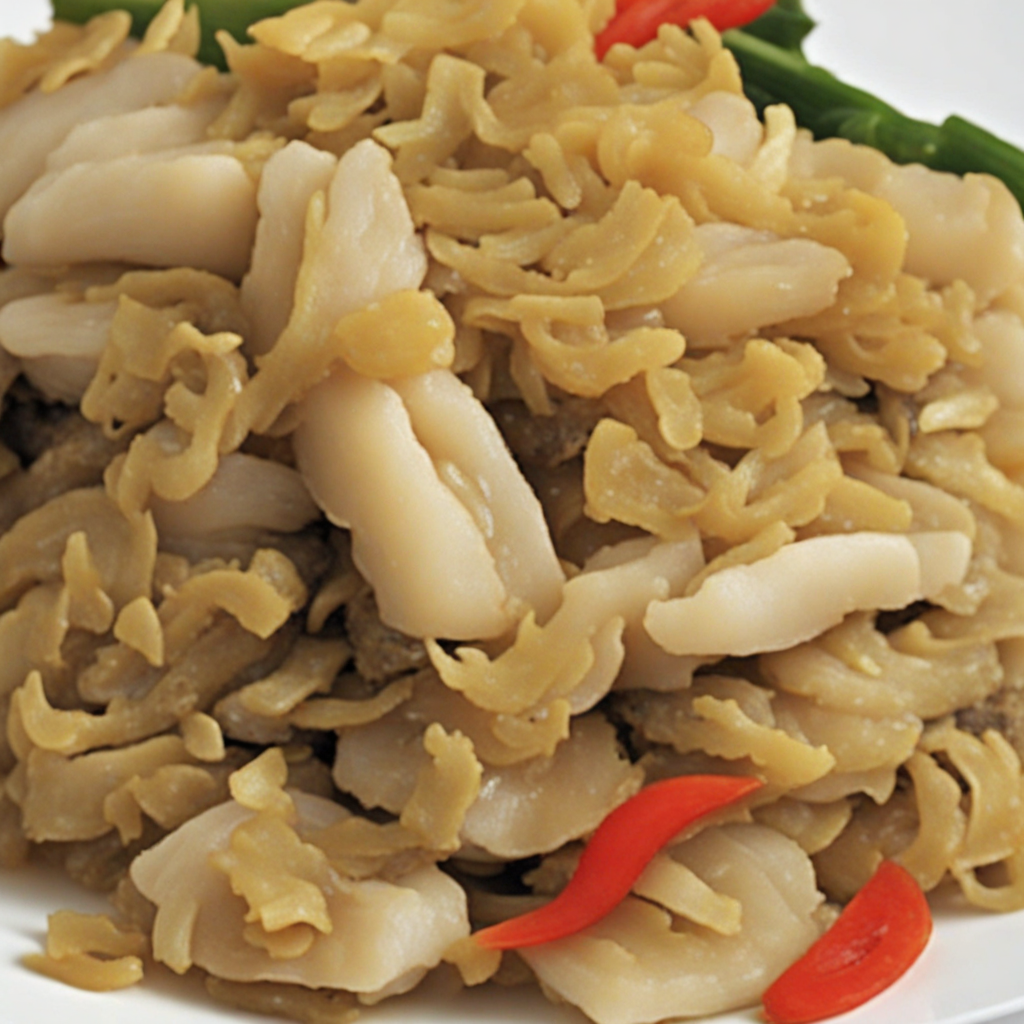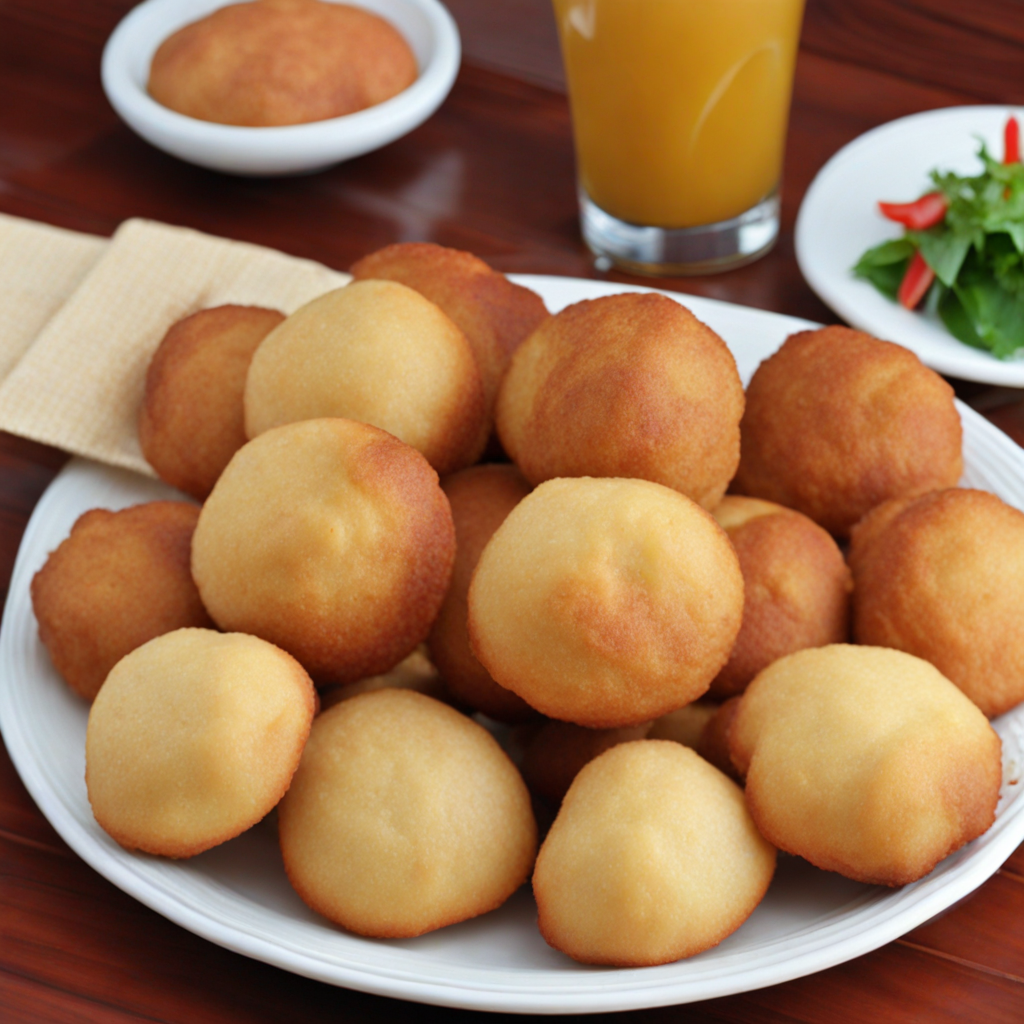Souse
Souse is a traditional dish from Antigua and Barbuda that exemplifies the rich culinary heritage of the Caribbean. It is a refreshing and tangy meat salad that has its roots in the region's history of resourcefulness and preservation. Originally, souse was a way for islanders to make use of leftover meats, particularly pork or chicken, which were often boiled and then marinated in a pickling solution. This technique not only extended the shelf life of the meat but also infused it with vibrant flavors. The flavor profile of souse is distinctively bright and zesty, characterized by the use of vinegar, citrus, and an array of spices. The vinegar acts as a pickling agent and a tenderizer, giving the dish its signature tang. Accompanying this acidity are fresh ingredients such as onions, bell peppers, and sometimes cucumbers, which add crunch and freshness to the dish. The blend of spices, including allspice, black pepper, and thyme, contributes depth and warmth, creating a well-rounded and satisfying flavor experience that is both invigorating and comforting. Preparation of souse begins with the choice of meat, typically pork or chicken, which is boiled until tender. The meat is then cooled and cut into bite-sized pieces. The next step involves creating the marinade, which consists of a mixture of vinegar, water, and an assortment of fresh herbs and spices. This marinating process is crucial as it allows the flavors to meld and penetrate the meat, resulting in a dish that
How It Became This Dish
Origin of Souse Souse, a beloved dish in Antigua and Barbuda, finds its roots in the culinary traditions brought over by enslaved Africans during the colonial period. The practice of preserving food through pickling and marinating was common among these communities, who adapted their cooking methods to utilize available ingredients. Souse typically consists of pickled meat, often pork or chicken, which is marinated in a vibrant mixture of vinegar, water, onions, and a medley of spices, including allspice, thyme, and pepper. The dish reflects a blend of various cultural influences, notably African, European, and indigenous Caribbean practices, showcasing the resilience and ingenuity of the islanders in creating flavorful meals from limited resources. Cultural Significance In Antigua and Barbuda, souse is more than just a dish; it holds cultural significance that goes beyond mere sustenance. Traditionally served on weekends, especially on Sundays, souse has become a staple in local gatherings and celebrations. Its vibrant flavors and refreshing qualities make it a popular choice during hot weather and festive occasions. Families often prepare large batches of souse to share with neighbors, reinforcing community bonds and cultural solidarity. The dish also plays a role in various festivals and events, symbolizing hospitality and togetherness. Development Over Time As with many traditional dishes, the preparation and ingredients of souse have evolved over time. In its early days, souse was primarily made with whatever meats were accessible, often utilizing leftovers from other meals to minimize waste. Over the years, the dish has seen variations in its preparation, with some cooks adding unique ingredients such as hot peppers, carrots, or even fruits like mango for a sweet twist. The introduction of modern culinary techniques has also influenced how souse is made today, with some chefs experimenting with presentation and flavor combinations while still honoring the traditional roots of the dish. Regional Variations While Antigua and Barbuda boast their own distinct version of souse, this dish can be found throughout the Caribbean with regional variations. In the neighboring islands, the concept of “souse” may refer to different types of pickled meats or seafood, often reflecting local tastes and available ingredients. For instance, in Barbados, souse typically features pickled pork served with a sweet and tangy sauce, while in Trinidad and Tobago, it may include a variety of meats and is often served with a side of bread or roti. The diversity of souse across the Caribbean highlights the interconnectedness of culinary traditions and the shared heritage of the region. Modern Adaptations In recent years, the globalization of cuisine and the rise of food tourism have brought renewed attention to traditional dishes like souse. As tourists flock to Antigua and Barbuda, local restaurants and street vendors have embraced the opportunity to showcase this iconic dish, often putting their own spin on the traditional recipe. Chefs are now more likely to incorporate local, organic ingredients and innovative techniques, creating a fusion of flavors that appeal to modern palates. Food festivals also celebrate souse, where chefs compete to present their best interpretations, fostering a sense of pride in this culinary heritage. Health Aspects Souse is often considered a healthier alternative to many other meat-centric dishes, primarily due to the pickling process that tends to reduce fat content while enhancing flavor. The use of vinegar in the marinade not only adds tanginess but also acts as a preservative, allowing the dish to be enjoyed over a more extended period. Additionally, the inclusion of fresh herbs and spices contributes to the dish's nutritional value, offering antioxidants and other health benefits. As health consciousness rises globally, many Antiguans and Barbudans have adapted the recipe to include leaner cuts of meat or incorporate more vegetables, ensuring that souse can be part of a balanced diet. Global Recognition The growing appreciation for Caribbean cuisine has placed souse on the global culinary map. Food enthusiasts and chefs worldwide are recognizing the dish's unique flavor profile and cultural significance. As Caribbean restaurants become more widespread, souse has found its way onto menus beyond the islands, often served as an appetizer or a refreshing side dish. Social media platforms have also played a crucial role in promoting traditional dishes like souse, with food bloggers and influencers sharing recipes, cooking videos, and personal stories that highlight the dish's cultural importance. Souse in Contemporary Society In contemporary Antiguan and Barbudan society, souse continues to be a symbol of cultural identity and heritage. As the younger generation seeks to maintain their culinary traditions while embracing modern influences, many are learning to prepare souse in their homes, often passing down family recipes that have been cherished for generations. This connection to the past fosters a sense of pride in their culinary heritage, ensuring that souse remains an integral part of their cultural narrative. Community events and cooking classes often include souse preparation, reinforcing its role as a communal dish that brings people together. Conclusion Souse represents more than just a delicious dish; it is a testament to the rich history, cultural significance, and adaptability of Antiguan and Barbudan cuisine. Through its evolution from a practical method of preserving food to a celebrated dish in modern culinary practices, souse embodies the spirit of resilience and creativity found within Caribbean culture. As it continues to be enjoyed by locals and visitors alike, the story of souse serves as a reminder of the importance of food in shaping identities and fostering connections across generations.
You may like
Discover local flavors from Antigua And Barbuda







